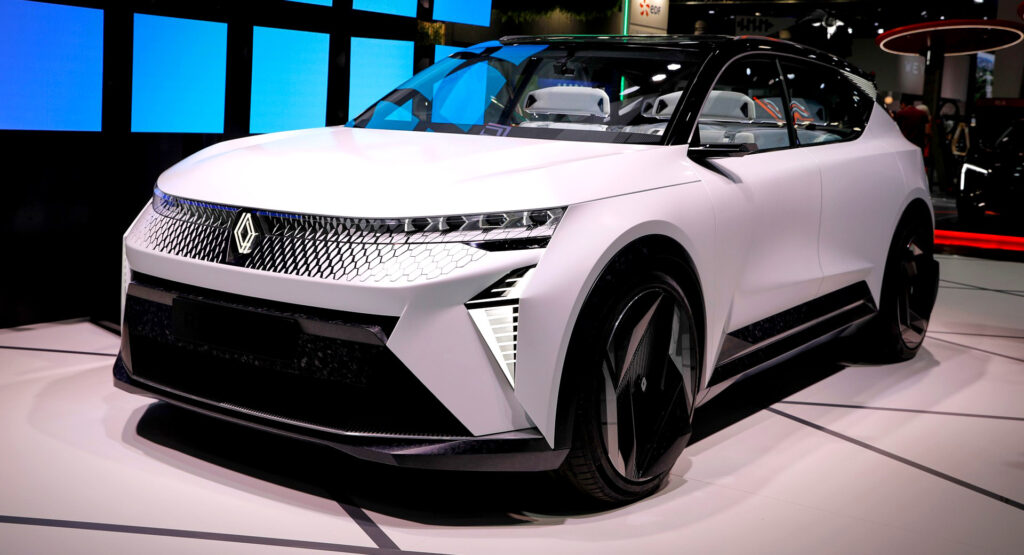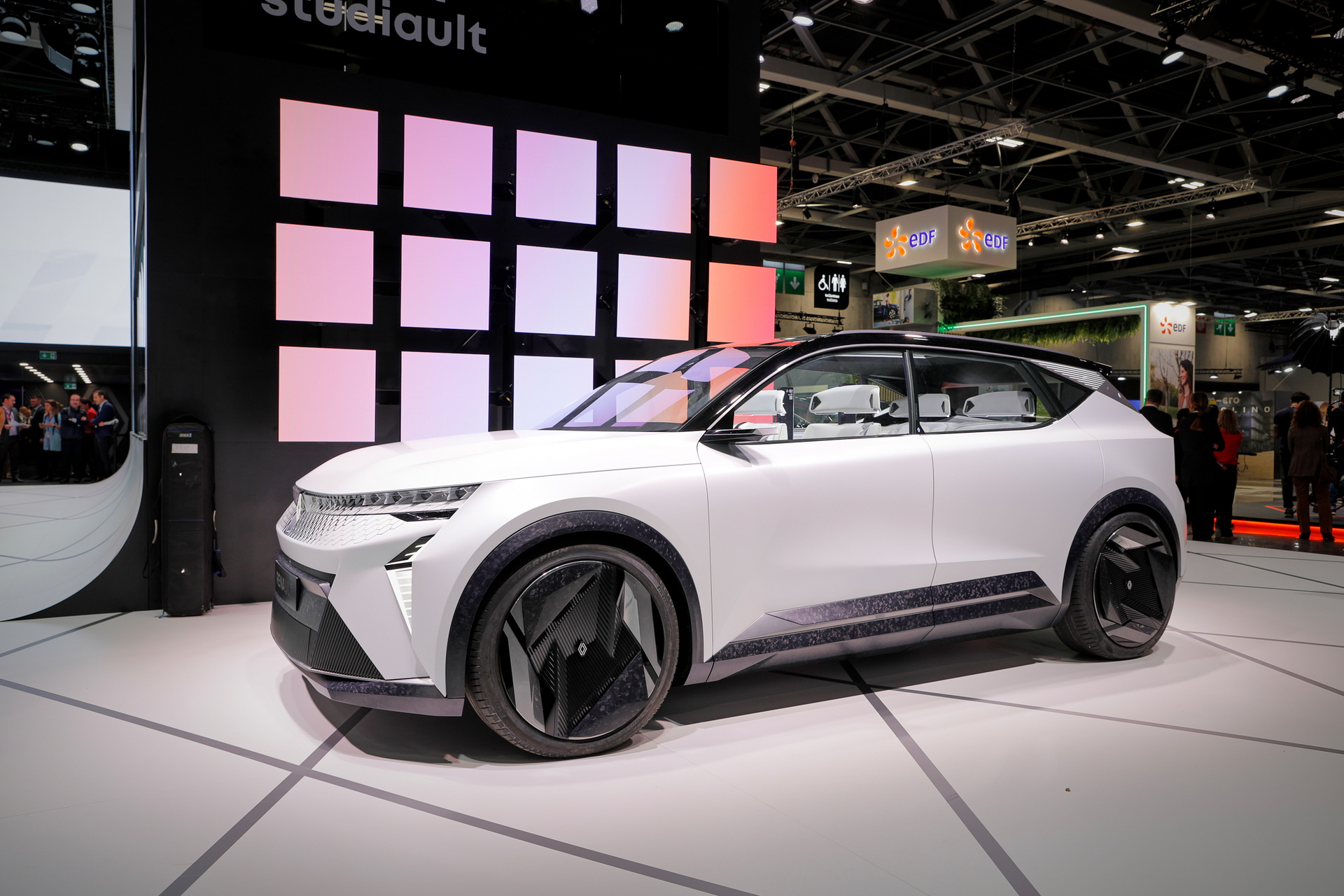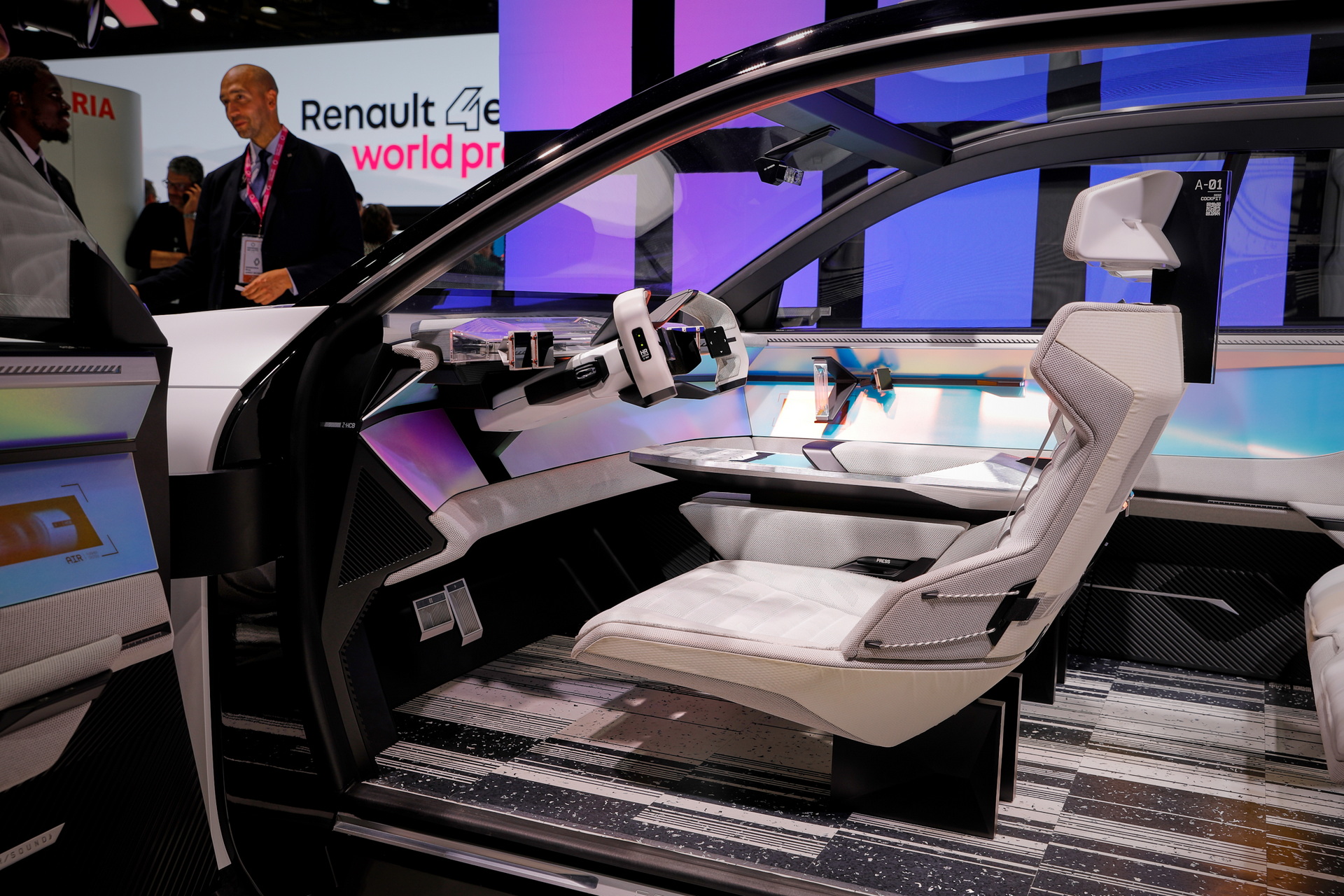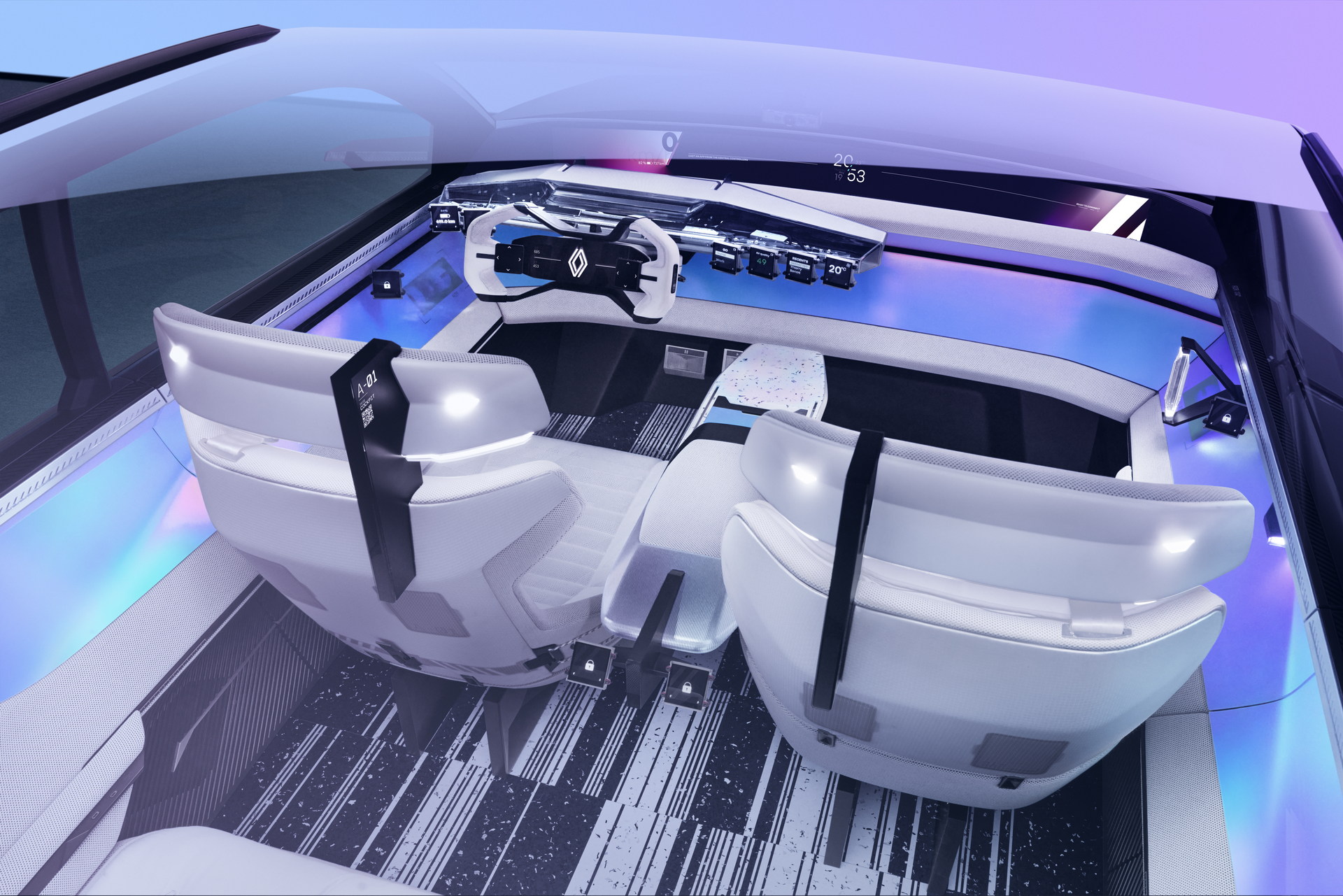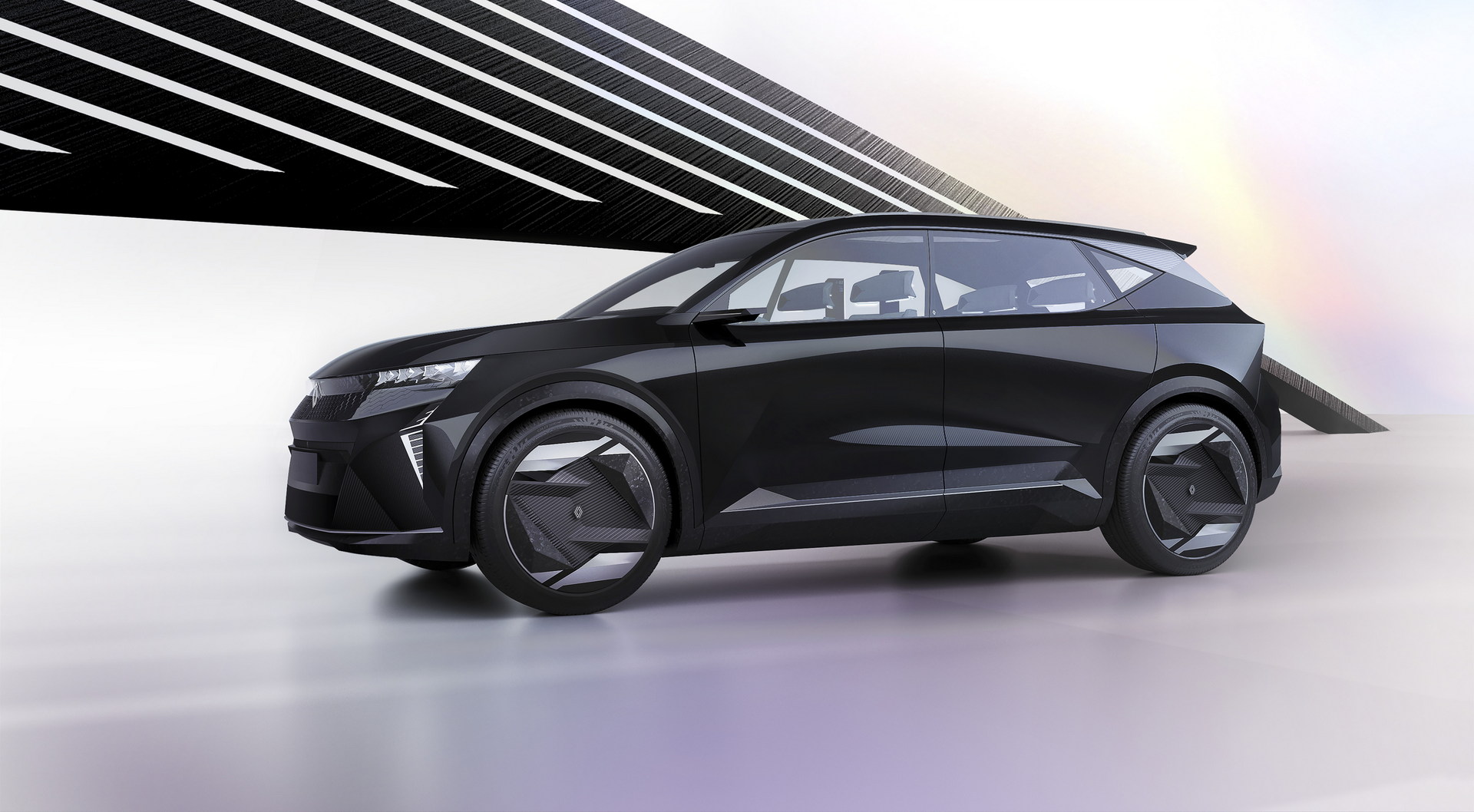We’ve updated this article with live images of the Ego e.Wave X from its world premiere at the Paris Motor Show on October 17-23, 2022. Check out our full coverage of the show here.
Renault presented the long-awaited “with a hydrogen engine” a concept that strangely embraces the Scénic nameplate. Renault Scénic Vision is radically different from all his predecessorswhich comes with an SUV-style body that closely resembles the production car due in 2024. In addition, it is equipped with an unconventional hybrid transmission that combines an electric motor and a hydrogen fuel cell range extender.
The highlight of the concept is the H2-Tech technology, which aims to reduce downtime associated with charging and carbon dioxide emissions. The power plant consists of a front electric motor with a capacity of 215 hp. (160 kW / 218 hp), a hydrogen fuel cell with a range extender with a capacity of 21 hp. (16 kW / 22 hp) and a battery with a capacity of 40 kW/h. This hybrid setup allows the vehicle to carry twice as light a battery for the same range. According to Renault, the Scénic Vision has a 75 percent smaller carbon footprint than a conventional battery electric car. After 2030, when the network of hydrogen stations (hopefully) expands, the company expects up to 800 km (497 miles) of range with a hydrogen refill time of about five minutes.
Read also: Renault Scenic E-Tech 2024 will regain the crown of practicality
The concept, which is based on an experimental platform, has a larger footprint than Mégane E-Tech measuring 4,490 mm (176.8 in) long, 1,900 mm (74.8 in) wide and 1,590 mm (62.6 in) high, with a 2,835 mm (111.6 in) wheelbase. According to Renault, the weight is 1,700 kg (3,748 lb), which is close to the top-spec Mégane, despite the addition of hydrogen fuel cell.
In terms of styling, the concept adopts the latest evolution of Renault’s design language with a heavily sculpted body, strong character lines and futuristic details. The two-box silhouette bridges the gap between SUVs and hatchbacks, distancing itself from the MPVs of the Scénic past. Up front, slim LED headlights look aggressive with additional LED units positioned below and new types of textiles for the grille and bumper.
The profile is quite dynamic thanks to the unconventional door cladding and the sci-fi 21-inch wheels. At the back, things are more down-to-earth with boomerang-shaped LED taillights, an illuminated badge and a prominent rear spoiler. Chief designer Gilles Vidal said the concept is 90 percent production-ready, while stating that the exterior design will continue to evolve.
See also: Renault CEO says mandatory electric cars too soon could harm the environment
Moving inside the cabin from the frameless suicide doors that improve accessibility, we come across a concept-style interior. Features include wide floating seats, lots of small rectangle-shaped screens (we counted eight), a circular screen at the top of the dash, a yoke-shaped steering wheel and quirky ambient lighting.
The wide-screen display can broadcast a live feed from an external camera, increasing the driver’s field of vision by 24 percent. The facial recognition system automatically opens the doors and adjusts the car’s settings according to the driver’s profile, and each seat is equipped with microphones and speakers for personalized sound and optimal communication between passengers. There is also a safety coach who ensures that the driver is healthy and alert to the road while helping them improve their driving habits.
In terms of materials, the Scénic Vision is a testament to Renault ecological thinking and focus on sustainability. More than 70 percent of the materials used in the car are recycled, with 95 percent being recyclable. A leather-free interior with low-carbon recycled polyester for the upholstery, while 30 percent of the plastic is from bio-resources.
As we mentioned before, the concept previews a production model that will be introduced in 2024 – most likely the fifth generation Scénic. In this case, the electric hydrogen drivetrain will be replaced by a more conventional battery electric drivetrain and will be based on a stretched version CMF-EV architecture that the Renault-Nissan-Mitsubishi alliance will use extensively in the coming years.
As for the use of hydrogen, Renault already offers production LCVs with fuel cells HYVIA brand and will continue to develop an experimental hydrogen-electric architecture for possible use in future models.
Live Photo: Stefan Baldauf / Guido ten Brink for CarScoops
https://www.carscoops.com/2022/10/renault-scenic-vision-unveiled-with-electric-and-hydrogen-powertrain/

